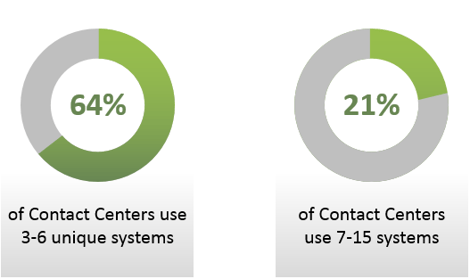 Proper customer experience management is one of the highest goals of a contact center, as the relationship with its customers is inherently valuable to a company. Achieving this objective requires call center leaders and agents to provide an engaging, helpful experience, whether by answering questions or solving customer problems. A rewarding encounter results in business goodwill and can generate new sales. Of course, companies must also be keep tabs on costs and productivity in the contact center. Managers must ensure agents perform satisfactorily and that new employees have proper training.
Proper customer experience management is one of the highest goals of a contact center, as the relationship with its customers is inherently valuable to a company. Achieving this objective requires call center leaders and agents to provide an engaging, helpful experience, whether by answering questions or solving customer problems. A rewarding encounter results in business goodwill and can generate new sales. Of course, companies must also be keep tabs on costs and productivity in the contact center. Managers must ensure agents perform satisfactorily and that new employees have proper training.
Technology, such as helpdesk software and call center scripts, is there to assist agents with the various tasks they must perform during a call. However, new problems arise with the disparate tools and applications: Many contact centers use up to 15 different solutions, each of which must be updated to reflect new data.
Data doesn’t automatically transfer over to all applications
It’s essential that a call center agent always have access to the most recent, accurate customer information in order to effectively handle calls. As most contact center solutions are maintained separately, data must be updated by agents in each of the platforms where it’s stored. Multiple applications sourced from a variety of brands don’t automatically transition customer data, so it’s up to the agents to update information as necessary.
Manually updating data across multiple applications is time consuming
Either during or after a customer call, an agent must go through the manual process of updating data that has changed as a result of the encounter. Though copying or cutting and pasting speeds up the process as compared to re-trying the material, the process is extremely time consuming and counterproductive. An agent’s focus should be on resolving customer issues and answering questions, not data entry.
Solving the Problem: Data & Application Connector
The latest contact center technology offers a single interface where agents can access all of the features they need, including tools, data, call center scripts and process controls. These solutions establish a connection among disparate systems, which facilitates back-end process automation and communication between the various applications. Additional benefits include:
- Real-time integration, which enables the most recent information to be recorded in the customer record for future access by agents.
- Elimination of time consuming data updating by call center agents.
- Data is accessed and passed smoothly via APIs to existing call center platforms, regardless of brand, architecture or source.
- Integrations with such applications as CRM, ACD/Telephony, ERP, order entry solutions, scheduling tools, online credit card processing, address verification, opportunity databases and many more.
Having access to the most recent customer data is essential for contact center agents to respond to caller concerns and help solve problems. Call center technology that establishes a seamless connection between data and various applications eliminates the need to update information among multiple platforms. Agent time is best spent focusing on customers, not updating voluminous data points. When call center personnel has access to connected systems within a unified data pool, they’re more productive and customer satisfaction improves.
Would you be interested in exploring further how some contact centers increase internal satisfaction by up to 45%?



